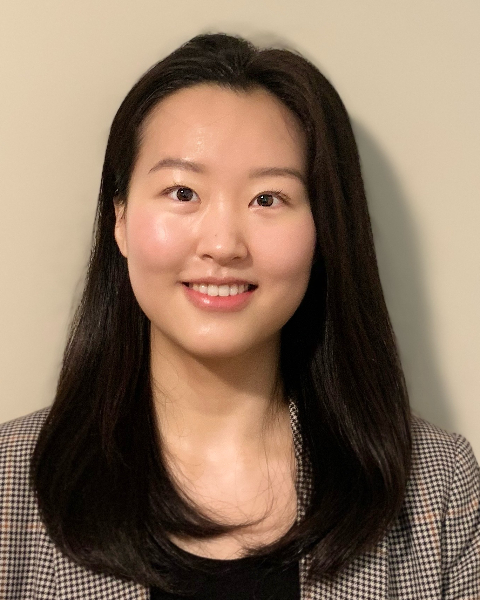PQA 03 - PQA 03 Gynecological Cancer, Pediatric Cancer, and Professional Development Poster Q&A
3523 - Eight-Year Results of a Phase II Prospective Trial of Proton Therapy for Non-Metastatic Pediatric Non-Rhabdomyosarcoma Soft Tissue and Bone Sarcomas
Monday, September 30, 2024
8:00 AM - 9:00 AM ET
Location: Hall C
Screen: 16

Soo Kang, BSN
Massachusetts General Hospital
Winchester, MA
Presenter(s)
S. Kang1, B. Bajaj1, K. W. Allison1, C. B. Hess1,2, B. Y. Yeap3, J. Marinelli4, S. M. MacDonald1, K. J. Marcus5, M. Huang6, A. Friedmann6, D. H. Ebb7, T. F. DeLaney1, Y. L. E. E. Chen1, N. J. Tarbell1, and T. I. Yock1; 1Department of Radiation Oncology, Massachusetts General Hospital, Harvard Medical School, Boston, MA, 2Department of Radiation Oncology, Winship Cancer Institute, Atlanta, GA, 3Department of Medicine, Massachusetts General Hospital, Harvard Medical School, Boston, MA, 4Department of Radiation Oncology, Massachusetts General Hospital, Harvard Medical School, Boston, MA, Boston, MA, 5Department of Radiation Oncology, Brigham and Womens Hospital/Dana-Farber Cancer Institute, Boston, MA, 6Department of Pediatric Hematology/Oncology, Massachusetts General Hospital, Harvard Medical School, Boston, MA, 7Department of Pediatric Hematology & Oncology, Massachusetts General Hospital, Harvard Medical School, Boston, MA
Purpose/Objective(s): This prospective phase II trial was designed to assess disease control and late effects following proton radiotherapy in children and young adults with non-metastatic Ewing Family of Tumors (EFT) or other bone sarcomas and non-rhabdomyosarcoma soft tissue sarcomas (NRSTS). Materials/
Methods: Sixty-nine pediatric and young adult patients (age<30) with NRSTS or bone sarcomas were enrolled between September 2006 and July 2016. Chemotherapy and surgery were administered to patients in accordance with current standard practices or according to co-enrollment on cooperative group protocols.
Results: Median follow-up was 7.7 years (range 0.4-15.7). 39 patients had EWS sarcoma, 5 patients had osteosarcoma, and 25 patients had other histologies. Eight-year overall survival (OS), event-free survival (EFS), local regional control (LC), and distant control (DC) rates for the whole cohort were 77.5%, 67.2%, 82.1%, and 87.9%, respectively and 81.0%, 76.8%, 92.3%, and 89.7% for EWS and 73.2%, 56.5%, 69.7%, and 86.3% for other histologies. The median age at the time of radiation therapy was 12.3 years (range 1-22). The most common primary tumor locations were head and neck (42%); abdomen/pelvis (26%) and paraspinal (23%). Seventy percent of patients had gross residual disease at the time of radiotherapy. The median radiation dose was 55.8GyE (range 41.4-72). Patients with a GTR had no difference in EFS (8-year: 69.9% vs 65.8%, p=0.9) or LC (8-year: 74.7% vs 85.3%, p=0.4). The non-significant relationship between surgical extent and EFS/LC did not change across histology (among EWS, 8-year EFS was GTR: 85.7% vs STR 75.0%, p=0.6 and 8-year LC was GTR: 85.7% vs STR 93.8%, p=0.5; among all other histologies, 8-year EFS was GTR: 64.3% vs STR 49.2%, p=0.6 and 8-year LC was GTR: 71.4% vs STR 68.8%, p=0.8). Eight-year follow-up toxicity assessments showed 22 patients (31.9%) with at least one grade 2 toxicity and 13 patients (18.8%) with at least one grade 3 toxicity, both at least partially attributable to radiation therapy. There were no grade 4 toxicities reported.
Conclusion: Eight-year OS, EFS, LC, and DC rates were similar to those observed in comparable studies of photon radiation. Proton radiation represents a safe and effective radiation modality for pediatric non-rhabdomyosarcoma bone and soft tissue sarcomas.
Purpose/Objective(s): This prospective phase II trial was designed to assess disease control and late effects following proton radiotherapy in children and young adults with non-metastatic Ewing Family of Tumors (EFT) or other bone sarcomas and non-rhabdomyosarcoma soft tissue sarcomas (NRSTS). Materials/
Methods: Sixty-nine pediatric and young adult patients (age<30) with NRSTS or bone sarcomas were enrolled between September 2006 and July 2016. Chemotherapy and surgery were administered to patients in accordance with current standard practices or according to co-enrollment on cooperative group protocols.
Results: Median follow-up was 7.7 years (range 0.4-15.7). 39 patients had EWS sarcoma, 5 patients had osteosarcoma, and 25 patients had other histologies. Eight-year overall survival (OS), event-free survival (EFS), local regional control (LC), and distant control (DC) rates for the whole cohort were 77.5%, 67.2%, 82.1%, and 87.9%, respectively and 81.0%, 76.8%, 92.3%, and 89.7% for EWS and 73.2%, 56.5%, 69.7%, and 86.3% for other histologies. The median age at the time of radiation therapy was 12.3 years (range 1-22). The most common primary tumor locations were head and neck (42%); abdomen/pelvis (26%) and paraspinal (23%). Seventy percent of patients had gross residual disease at the time of radiotherapy. The median radiation dose was 55.8GyE (range 41.4-72). Patients with a GTR had no difference in EFS (8-year: 69.9% vs 65.8%, p=0.9) or LC (8-year: 74.7% vs 85.3%, p=0.4). The non-significant relationship between surgical extent and EFS/LC did not change across histology (among EWS, 8-year EFS was GTR: 85.7% vs STR 75.0%, p=0.6 and 8-year LC was GTR: 85.7% vs STR 93.8%, p=0.5; among all other histologies, 8-year EFS was GTR: 64.3% vs STR 49.2%, p=0.6 and 8-year LC was GTR: 71.4% vs STR 68.8%, p=0.8). Eight-year follow-up toxicity assessments showed 22 patients (31.9%) with at least one grade 2 toxicity and 13 patients (18.8%) with at least one grade 3 toxicity, both at least partially attributable to radiation therapy. There were no grade 4 toxicities reported.
Conclusion: Eight-year OS, EFS, LC, and DC rates were similar to those observed in comparable studies of photon radiation. Proton radiation represents a safe and effective radiation modality for pediatric non-rhabdomyosarcoma bone and soft tissue sarcomas.
